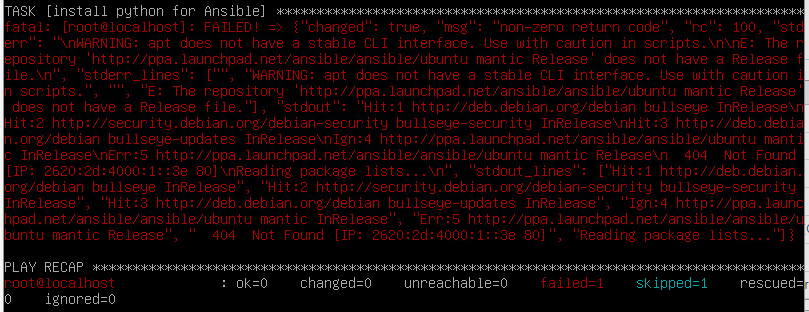Hopefully this will help someone. This seems to work for me. Subscribed communities update, I am able to post. I'm the only user right now on my server. NPM took me a bit of messing around with the config but I think I have everything working, some of this may be redundant / non functional but I don't have the will to go line by line to see what more I can take out. Here is how I have it configured. Note that some things go to the Lemmy UI port and some to the Lemmy port. These should be defined in your docker-compose if you're using that. (Mine is below)
On the first tab in NPM, "Details" I have the following:
Scheme: http
Hostname: <docker ip>
Port: <lemmy-ui port>
Block Common Exploits and Websockets Support are enabled.
On the Custom Locations page, I added 4 locations, you have to do one for each directory even though the ip/ports are the same.
Location: /api
Scheme: http
Hostname: <docker ip>
Port: <lemmy port>
Repeat the above for "/feeds", "/pictrs", and "/nodeinfo". The example file they give also says to have ".well_known" in there but as far as I know that's just for Let's Encrypt which NPM should be handling for us.
On the SSL tab, I have a Let's Encrypt certificate set up. Force SSL, HTTP/2 Support, and HSTS Enabled.
On the Advanced tab, I have the following:
location / {
set $proxpass "http://<docker ip>:<lemmy-ui port>";
if ($http_accept = "application/activity+json") {
set $proxpass "http://<docker ip>:<lemmy-ui port>";`
}
if ($http_accept = "application/ld+json; profile=\"https://www.w3.org/ns/activitystreams\"") {
set $proxpass "http://<docker ip>:<lemmy-ui port>";
}
if ($request_method = POST) {
set $proxpass "http://<docker ip>:<lemmy-ui port>";
}
proxy_pass $proxpass;
rewrite ^(.+)/+$ $1 permanent;
# Send actual client IP upstream
proxy_set_header X-Real-IP $remote_addr;
proxy_set_header Host $host;
proxy_set_header X-Forwarded-For $proxy_add_x_forwarded_for;
}
I probably should add in my docker compose file as well... I'm far from a docker expert. This is reasonably close to their examples and others I found. I removed nginx from in here since we already have a proxy. I disabled all the debug logging because it was using disk space. I also removed all the networking lines because I'm not smart enough to figure it all out right now. If you use this, look out for the < > sections, you need to set your own domain/hostname, and postgres user/password.
version: "3.3"
services:
lemmy:
image: dessalines/lemmy:0.17.3
hostname: lemmy
restart: always
ports:
- 8536:8536
environment:
- RUST_LOG="warn"
- RUST_BACKTRACE=full
volumes:
- ./lemmy.hjson:/config/config.hjson:Z
depends_on:
- postgres
- pictrs
lemmy-ui:
image: dessalines/lemmy-ui:0.17.4
# use this to build your local lemmy ui image for development
# run docker compose up --build
# assuming lemmy-ui is cloned besides lemmy directory
# build:
# context: ../../lemmy-ui
# dockerfile: dev.dockerfile
ports:
- 1234:1234
environment:
# this needs to match the hostname defined in the lemmy service
- LEMMY_UI_LEMMY_INTERNAL_HOST=lemmy:8536
# set the outside hostname here
- LEMMY_UI_LEMMY_EXTERNAL_HOST=< domain name>
- LEMMY_HTTPS=false
- LEMMY_UI_DEBUG=true
depends_on:
- lemmy
restart: always
pictrs:
image: asonix/pictrs:0.4.0-beta.19
# this needs to match the pictrs url in lemmy.hjson
hostname: pictrs
# we can set options to pictrs like this, here we set max. image size and forced format for conversion
# entrypoint: /sbin/tini -- /usr/local/bin/pict-rs -p /mnt -m 4 --image-format webp
environment:
- PICTRS_OPENTELEMETRY_URL=http://otel:4137
- PICTRS__API_KEY=API_KEY
- RUST_LOG=debug
- RUST_BACKTRACE=full
- PICTRS__MEDIA__VIDEO_CODEC=vp9
- PICTRS__MEDIA__GIF__MAX_WIDTH=256
- PICTRS__MEDIA__GIF__MAX_HEIGHT=256
- PICTRS__MEDIA__GIF__MAX_AREA=65536
- PICTRS__MEDIA__GIF__MAX_FRAME_COUNT=400
user: 991:991
volumes:
- ./volumes/pictrs:/mnt:Z
restart: always
postgres:
image: postgres:15-alpine
# this needs to match the database host in lemmy.hson
# Tune your settings via
# https://pgtune.leopard.in.ua/#/
# You can use this technique to add them here
# https://stackoverflow.com/a/30850095/1655478
hostname: postgres
command:
[
"postgres",
"-c",
"session_preload_libraries=auto_explain",
"-c",
"auto_explain.log_min_duration=5ms",
"-c",
"auto_explain.log_analyze=true",
"-c",
"track_activity_query_size=1048576",
]
ports:
# use a different port so it doesnt conflict with potential postgres db running on the host
- "5433:5432"
environment:
- POSTGRES_USER=< dbuser >
- POSTGRES_PASSWORD=< dbpassword>
- POSTGRES_DB=lemmy
volumes:
- ./volumes/postgres:/var/lib/postgresql/data:Z
restart: always
There's another post over here https://fernchat.esotericmonkey.com/post/277 with a similar setup, less stuff in the Advanced tab. If I'm bad at explaining maybe another guide will help.

